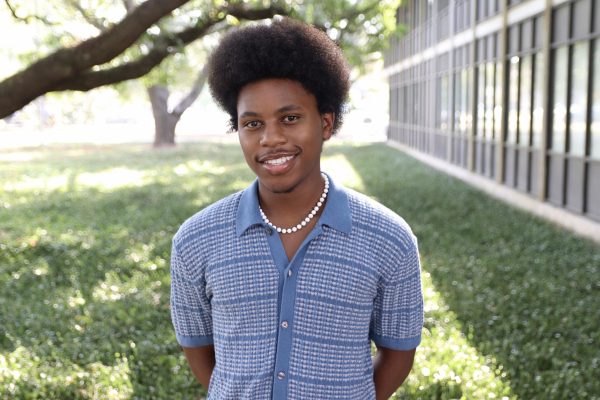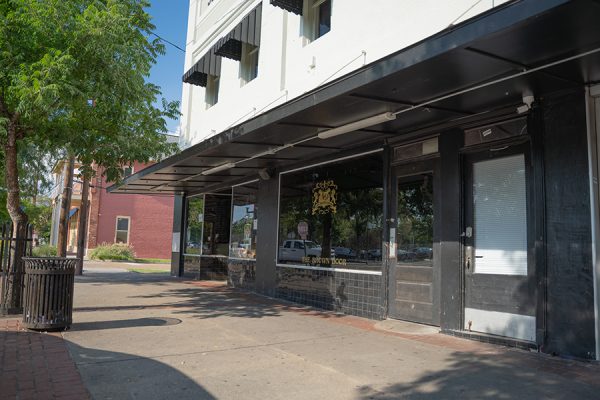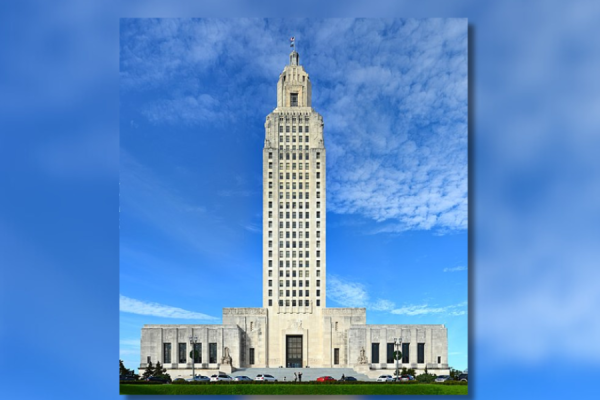Governor John Bel Edwards takes center stage in discussion on racial injustice in Louisiana
Governor John Bel Edwards emphasizes the impact Justice John Marshall Harlan had with his dissenting opinion in “Plessy v. Ferguson” and how that dissent contributed to racial progress in Louisiana as a whole. September 27th, 2022.
On Tuesday night, Southeastern students and faculty gathered together in the Student Union Theater for the final presentation of the first day of the symposium, as Governor John Bel Edwards presented his lecture entitled, “1896-2022: The Pardoning of Homer Plessy and its Impact on Racial Justice.”
Prior to his speech, the governor was introduced by Dr. John L. Crain, president of the university, and Dr. Samuel Hyde, a Southeastern professor and director of the Center for Southeast Louisiana Studies, the establishment that organized the symposium.
Gov. Edwards began the lecture by setting the scene leading up to what would become Plessy v. Ferguson, the landmark U.S. Supreme Court ruling that established the “separate but equal” concept, which held that racial segregation laws did not violate the Constitution so long as the facilities for each race were of equal quality.
Homer Plessy was born on March 17, 1863, during Reconstruction, when mandatory military presence in the South after the Civil War gave black people voting rights. A shoemaker by trader, Plessy was inspired by his stepfather’s work in the 1870s Unification Movement, he became a racial activist.
The Louisiana State Legislature established the Separate Car Act in 1890, forcing railroad companies to provide separate trains for whites and blacks.
At the heart of the act was the statement: “No person or persons shall be admitted to occupy seats in coaches other than the ones assigned to them, on account of the race they belong to.”
Edwards said this requirement was a way for the legislature to uphold white supremacy. The bill was eventually signed into law by former Governor Francis Nichols, who was previously an officer for the Confederacy during the Civil War.
The Citizens’ Committee in New Orleans, according to Edwards, was looking to “test and invalidate recently enacted racial segregation laws” and set their eyes on the Separate Car Act. They recruited Homer Plessy specifically due to his background in political activism and to expose the ridiculousness of the new law due to his appearance.
“He was ⅞ white and ⅛ black, and under the law he was black. He looked like a caucasian,” Edwards said.
Railroad companies were brought in on the scheme to assure Plessy’s arrest would have maximum messaging impact. According to Edwards, railroads were tired of paying twice for the management and care of train cars to comply with the statute and wanted to see the act challenged in court.
Homer Plessy was arrested on June 7, 1892. This was the start of a long legal journey that would lead all the way to the Supreme Court. On May 18, 1896, the Supreme Court ruled against Plessy by a vote of 7-1. This set up the “separate but equal” doctrine, which was the basis for racist Jim Crow laws in the South for the next sixty years. This meant that people of color had to live with segregation and brutally discriminatory policies and laws for generations. “Separate but equal” would eventually end, at least legally, with the “Brown v. Board of Education” decision.
The lone dissenting justice in “Plessy v. Ferguson,” Justice John Marshall Harlan, became the focus for much of the rest of Edwards’ lecture.
According to the dissenting opinion Harlan authored for the case, “In this country, there is no superior, dominant ruling class of citizens. There is no caste here. Our constitution is colorblind, and neither knows nor tolerates classes among citizens. In respect of civil rights, all citizens are equal under the law…the common government involved shall not permit the seeds of race hate be planted under sanction of law.”
Justice Harlan believed that “Plessy v. Ferguson” would “prove to be quite as pernicious” as “Dred Scott vs. Sanford,” the Supreme Court case widely considered to be the absolute worst in the high court’s history and that pushed the U.S. toward Civil War. According to the governor, Harlan was absolutely right.
When the governor finished his speech, the audience erupted in enthusiastic applause. For Angelina Bonneval, a graphic design major at Southeastern, the fanfare was well-earned.
“I think he did a really great job of displaying his feelings towards his job and his love for the state and I love everything that he said,” Bonneval said.
Dr. Claire Procopio, a communication and media studies professor and Southeastern’s Honors Program Director, also shared similar positive feelings about the governor’s presentation.
“I thought the governor’s address was a call for accurate history, for improved race relations and for an investment in a better Louisiana future,” Procopio stated.
During his lecture, the governor discussed about how far Louisiana has come in terms of race relations and how important Plessy’s posthumous pardon was in highlighting these advances. But, he also said Louisiana and the United States as a whole are still not where they should be when it comes to racial equality and justice.
“By the way, I don’t sit here today acting like we’re where we need to be, we still have a long way to go,” Edwards said. “Brown v. Board of Education was handed down in 1954, finally overruling Plessy. In terms of public education…real efforts at desegregation in Louisiana didn’t happen until about fifteen years after.”
The theme of continuing progress and striving toward equality stayed ever-present in the governor’s presentation and certainly resonated with audience members such as Kyle Hidalgo, a political science major at Southeastern.
“I think he put into context the amount of work that has been done and what still needs to be done in order for racial equality to be fully realized in the state of Louisiana,” Hidalgo said.
Your donation will support The Lion's Roar student journalists at Southeastern Louisiana University.
In addition, your contribution will allow us to cover our annual website hosting costs.
No gift is too small.

Kennith Woods is a junior communication major with a concentration in television and multimedia journalism and a creative writing minor. A resident of...









